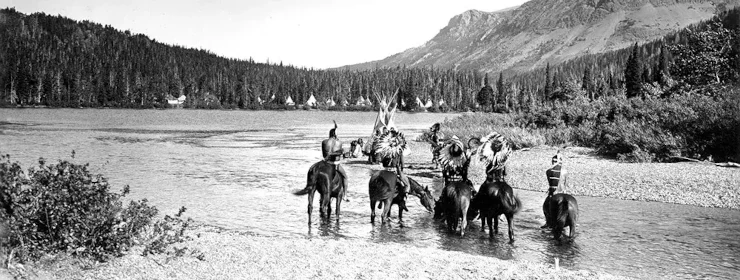


The oral tradition of Native Americans is a rich and complex source of narratives in which it is often difficult to distinguish between myths and other forms of storytelling. In their language, people commonly use terms like "stories," which can range from "true stories" recounting events from the present world to "mythical stories" describing events that occurred in ancient times, long before the appearance of humans.
Since these cultures lack a writing system, these stories were not recorded on paper until colonizers began documenting them in the 1830s. In ancient times, in every community, there was at least one wise elder who held the knowledge of these narratives. It was their task to represent these stories in a memorable manner, often embodying various characters through grunts, shouts, roars, or moans, making the stories come to life.
Before the U.S. government confined native tribes to reservations, different indigenous communities had intense contact with each other, resulting in an enriching exchange of stories. This led to the spread of the same stories, though with variations and nuances, that could be found across the continent. This phenomenon underscores the deep connection between Native peoples and the significance of their narratives in the history of North America.
Out of the approximately 300 languages that thrived in North America before the arrival of Europeans, about 200 of them have been preserved. These languages are spoken by roughly three-quarters of a million people. The linguistic diversity is astonishing, ranging from languages with a considerable number of speakers, like Navajo, which has 160,000 speakers, to critically endangered languages, like Chinook, spoken by only 30 individuals.
Below is a chronological table outlining key milestones in the history of Native Americans in North America:
- 60,000-12,000 years ago: The first peoples arrive in North America from northeastern Asia, crossing land or ice, marking the beginning of a rich history.
- 10,000-8,000 years ago: The first cultures emerge, laying the foundations for the complex societies that will develop on the continent.
- 1000-1300 AD: The expansion of Athabascan languages, such as Apache and Navajo, is due to migrations from Canada to the southwest.
- 1600-1750 AD: Peoples like the Cheyenne and Dakota settle on the vast plains of North America. The arrival of horses, introduced by the Spanish, revolutionizes warfare and hunting in the region.
- 1830-1840 AD: The United States forcibly removes most natives living east of the Mississippi River to the west, marking a period of forced displacement.
- 1890: The U.S. cavalry carries out the massacre of 200 Dakota in Wounded Knee, South Dakota, ending Native resistance against white population expansion.
 Native American Cultures: Myths and magic
Native American Cultures: Myths and magic
You can purchase this book on Amazon.
This book challenges deep-seated stereotypes and offers an enriching perspective that contributes to a more comprehensive and respectful appreciation of the indigenous peoples of North America. Through an understanding of their myths and beliefs, we are taking an important step toward cultural reconciliation and the recognition of the diversity that has enriched the history of this continent.
These mythical stories, many of them linked to the literary genre of fantasy, reveal a world where the divine and the human intertwine in narratives that explain the cosmic order, creation, and the fundamental structure of the universe. Discover how these sacred tales bear witness to the deep connection of the natives with nature and spirituality.
Native Americans: Population and Territories
Native Americans: Cultures, customs, worldview
Traditions, myths, stories and legends